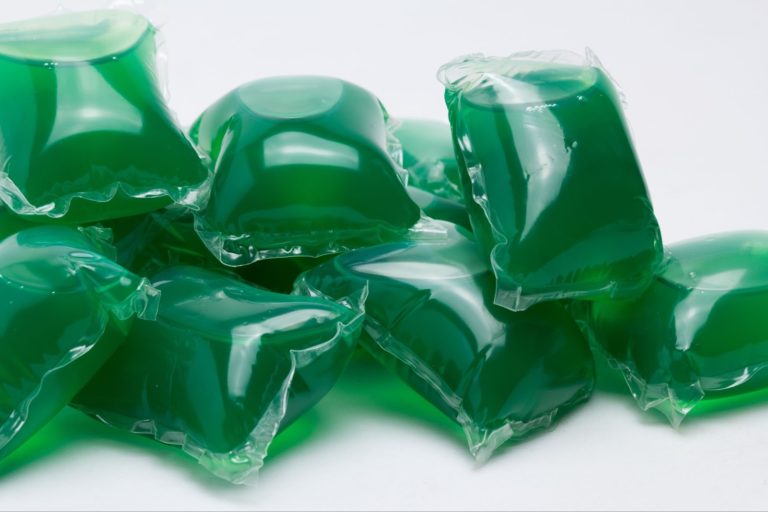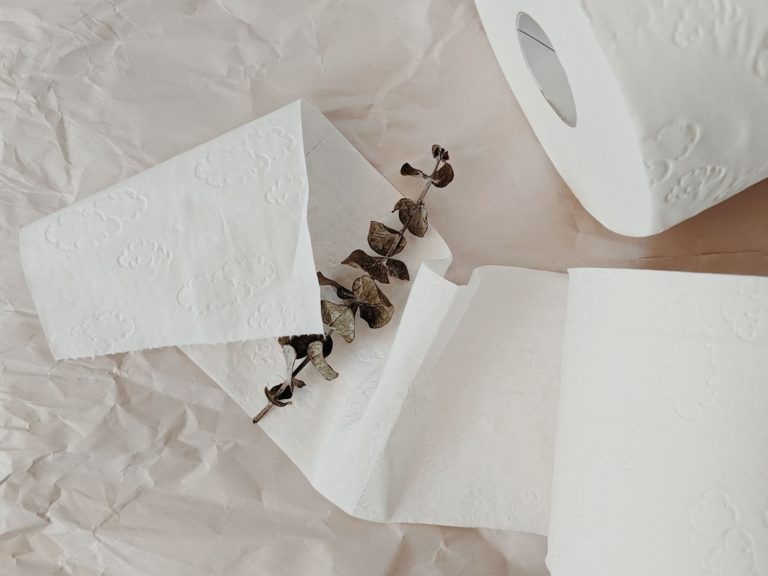How Sustainable Are Clothes Made From Recycled Materials: The Good and the Bad

Almost as quickly as a new trend emerges in the world of fashion, it seems to disappear again. There is, however, one style that seems to be sticking around for good. Increased attention and use of recycled clothing is one example of how the fashion industry is embracing the concept of sustainable fashion.
An estimated 85 percent of textiles (or around 13 million tonnes yearly) are wasted in the United States. About 92 million tonnes of textiles are discarded annually around the world. This is analogous to a commercial-sized dump truck full of garments being dumped into a landfill every second. Producing methane gas and hazardous chemicals, this massive waste has serious consequences for the environment. More and more clothing companies are adding recycled materials into their designs as part of an effort to reduce their environmental impact.
When the clothing manufacturing industry is discussed, it is almost always about how it can be more sustainable. After all, this sector is one of the largest users of natural resources and polluters of water supplies around the world. With that in mind, it’s no wonder that anything associated with making garments has to meet high standards of eco-friendliness before it can be considered sustainable.
However, there’s also another side to this story that shows not everything is so black and white. Some recycled materials used in clothes are not so green after all. And some innovations in this niche sub-sector might not be as sustainable as previously thought. So what exactly is the deal with clothing made from recycled materials? Let’s find out…
What is recycled fabric?
Fabric is the main part of any garment. It provides strength and flexibility to any piece of clothing and is the part that wears out quickly. The fabric sourcing and the type of material used can greatly impact the performance of the garment, as well as its sustainability. Simply put, recycled fabric is a fabric made from used or discarded materials like old clothing and other textiles.
This is done to preserve natural resources. The recycled fabric can be woven or knit. It can also be made into fabric by mixing recycled fibers with virgin fibers. It’s worth noting that not all fabrics can be recycled. Fabrics have to be made from materials that are easy to break down, such as natural fibers like cotton, silk or linen. Otherwise, they might not be able to be reused.
Sustainable fashion methods are being implemented by more and more fashion companies as a means of combating this waste. Retailers are making a constructive contribution to a more sustainable future by using recycled fabric to make new clothing. What, though, does recycled clothing consist of?
Most commonly, recycled fabrics are created from:
- Fabrics and garments that have been previously worn or used
- Plastic bottles and grocery bags are examples of trash that can be recycled.
When creating fresh fibers for garments, these worn fabrics or waste materials are shredded.
Sustainable fabrics from recycled materials
Although there is no such thing as a truly sustainable fabric, some are better than others. Among the most sustainable fabrics made from recycled materials is:
- Recycled cotton: Cotton is one of the most widely used fabrics. It is one of the most harmful fabrics because of the huge quantities of pesticides used on it. It takes a lot of water and energy to grow it, and it releases greenhouse gas during production. It also uses a lot of chemicals. When recycled, it can be turned into other cotton fabrics that are used in clothing.
- Recycled polyester: Polyester is another widely used fabric, It is a petrochemical fabric that releases harmful gas when in use. It is also not as durable as other materials. When recycled it can make fabrics like nylon, which can be used in clothing. It can also be used for carpet fibers.
The Good: Repurposed Polyester and cotton
- Cotton and polyester are two of the most widely used fabrics, both in the textile and apparel industries. Naturally, it is great to know that both can be made from recycled materials.
- Growing cotton uses a lot of water and chemicals, so when it’s recycled it’s better for the environment. It also uses less energy to turn recycled cotton into the new fabric than it does to grow new cotton.
- Polyester has a bad reputation since it’s made from petrochemicals, a fossil fuel that’s not so good for the environment. However, recycled polyester can be turned into new fabrics that are just as good as the ones previously made from petrochemicals.
The Bad: PVC and polyester blends
- Unfortunately, some fabrics are not as sustainable as we’d like them to be. One of these fabrics is PVC, or polyvinyl chloride, a synthetic fabric that is often associated with cheap raincoats.
- PVC has a lot of health hazards due to the toxic chemicals used in its manufacturing. It also releases greenhouse gas during production.
- When recycled, PVC can be turned into fabrics like synthetic leather, which is used in shoes and bags. However, not all recycled PVC becomes fabrics—some are used in plumbing and car seats.
- A lot of recycled PVC is mixed with other fabrics, such as polyester. PVC mixed with other fabrics does not qualify as sustainable because it does not get reused as entirely new fabric.
- It mostly gets mixed with other chemicals to become new PVC. This is why recycled PVC is not as sustainable as recycled polyester.
- PVC is not only used to make raincoats, but also flooring, furniture and roofing materials, which is why it’s important to make sure that whatever is labeled recycled PVC is recycled PVC.
- Some recycled PVC is made from old toys and appliances, but not all of it is recycled PVC. There are ways to tell—if it’s made from old toys, it will say so on the label.
- However, some fabric manufacturers want to make their goods look eco-friendly and use recycled PVC without being completely honest about it. This PVC is made from new PVC and some recycled materials. Therefore, it is not recycled PVC, but rather a new material made from recycled materials.
- This PVC is not as sustainable as real recycled PVC, since the materials used in it can be used only once. The recycled PVC made from old PVC can be used multiple times.
The problem with some recycled fibers
Some fabrics made from recycled fibers are not as sustainable as they are made out to be. This is because some used materials—such as petroleum-based fabrics—can be recycled only once or twice.
When recycled fabrics are used for clothing, they are turned into fabrics that resemble the original materials. For example, recycled polyester is turned into new polyester fabric. However, what happens when you start mixing different types of fabrics? What do you get when you put recycled cotton and recycled polyester together?
Not a new cotton fabric and not a new polyester fabric—you get a blend of the two fabrics. Blending fabrics means that they cannot be used in their original forms again.
Let’s take recycling PVC as an example again. PVC is made from new petroleum. When recycled, it is turned into other PVC materials. However, what happens when you start mixing new PVC with recycled PVC? You get a PVC blend. It does not get turned into anything new because it is not PVC in its original form.
The innovations in sustainable clothing
Besides simply recycling materials, the apparel sector is investing in new technologies to minimize its carbon footprint. For example, there are innovative technologies used in the manufacturing of textiles such as 3D printing fabrics and printing fabrics with edible dyes.
There is also a big push toward using renewable energy to power cotton and polyester production. There are even other more futuristic solutions to make the clothing industry more sustainable.
Clothing manufacturers are working on ways to make garments entirely self-cleaning and stain-resistant. They’re also making clothes that keep you warm or cool when you want it, and let your body breathe when it needs to be ventilated. These innovations will make garments even more sustainable.
What is the Market Strategy?
Backstage change: Before sustainable fashion can be honestly offered to the public, material sourcing, manufacture, and production must change. Finding sustainable, repurposed materials and applying ethical processes may be difficult, but the final goods are things both the organization and prospective buyers can be proud of.
MissionTransparency: Once behind-the-scenes activities are sustainable, sell your mission with transparency. Cos, a fashion retailer, emphasizes sustainability in its mission and identity. Their website has a page detailing their sustainable efforts. Cos lists their organic, responsible, recycled and repurposed, and conventional clothing materials, along with year-over-year data. So, consumers can see Cos’s sustained improvement year after year.
Beyond apparel, the company integrates sustainable principles in other retail categories. Sustainability includes:
- 100% recyclable, reused, or biodegradable packaging by 2025.
- Cos Resell is a community where users can purchase and sell secondhand Cos clothes, extending its lifespan.
Messages: Consumers must know what they’re buying for sustainability-focused marketing to function. Product messaging helps here. Every recycled clothing product should provide a list of recycled components and sustainable processes. Consumers know what they’re buying and how it affects the environment thanks to clear product marketing.
To make online or in-store buying easier for sustainability-minded customers, offer recycled/sustainable clothes. By clearly identifying and categorizing your recycled clothes products, customers won’t have to hunt for them. Instead, customers can shop knowing the collection’s products correspond with their ideals.
Conclusion – How Sustainable Are Clothes Made From Recycled Materials
Clothing manufacturing is one of the most resource-intensive industries in the world. It is also one of the largest polluters of water. Because of this, the industry is working on ways to make its process more sustainable.
One way to do this is by recycling materials and making garments from recycled materials. While recycled fabrics don’t necessarily make more sustainable garments, some types of recycled fabrics are more sustainable than others.
This is why it’s important to know what goes into the production of a garment before you buy it.






